Many cultures shy away from discussing death, but in San Miguel de Allende, it is celebrated with vibrant colors, heartfelt traditions, and joyful remembrance. During the Day of the Dead, you will witness streets adorned with marigolds, families gathering to honor loved ones, and altars filled with offerings. This celebration is not about mourning but embracing death as a natural part of life. In San Miguel de Allende, you will experience a unique blend of ancient rituals and modern festivities, making it a must-visit destination to understand this profound cultural tradition.
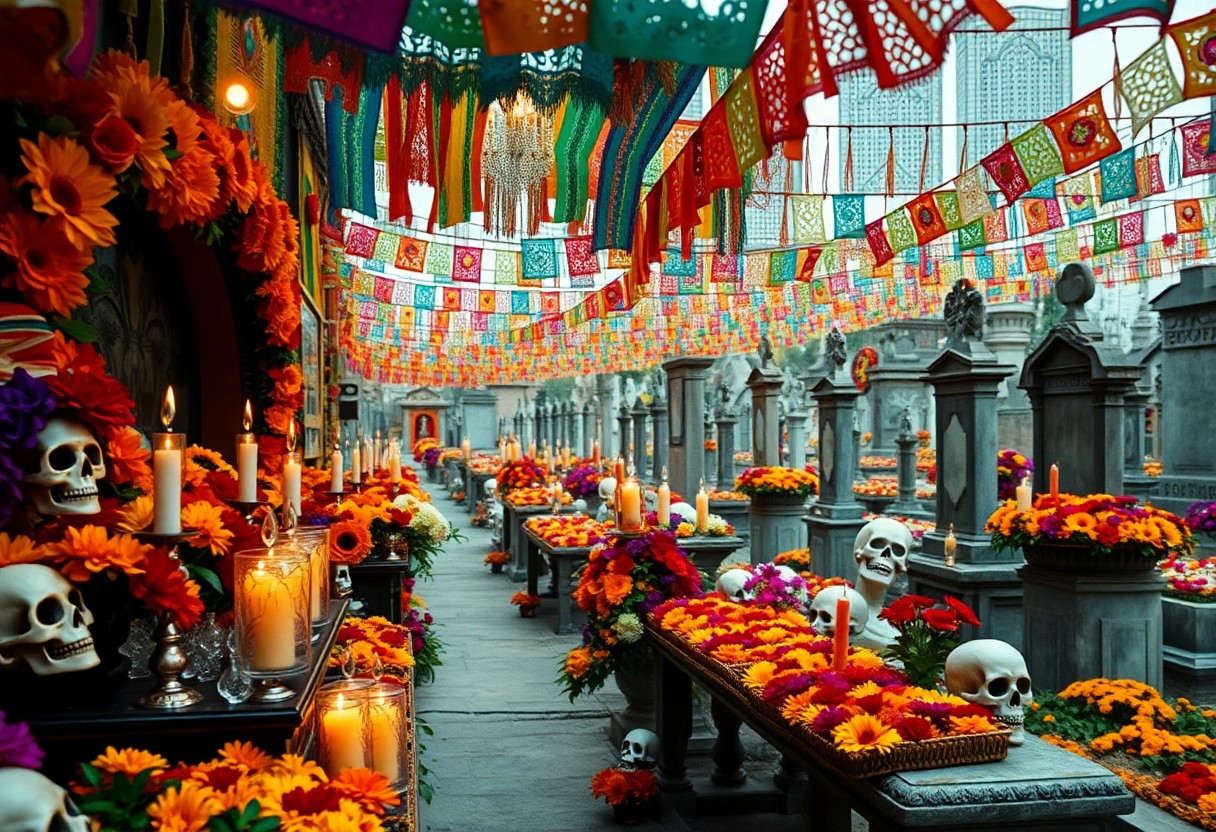
Origins of the Day of the Dead
Before the Spanish colonization, the Day of the Dead (Día de los Muertos) had its roots in ancient Mesoamerican cultures. Indigenous groups like the Aztecs celebrated their ancestors during a month-long festival in the Aztec month of Miccailhuitontli, which honored the goddess Mictecacihuatl, the “Lady of the Dead.” These rituals focused on the cyclical nature of life and death, laying the foundation for the modern celebration.
Ancient Traditions
For over 2,500 years, indigenous civilizations in Mexico held rituals to honor the deceased. These traditions included offerings of food, flowers, and incense, symbolizing the connection between the living and the dead. The Aztecs believed that death was not an end but a continuation of life in another realm, a perspective that still shapes the Day of the Dead today.
The Spanish Influence
Influence from Spanish colonizers in the 16th century transformed the Day of the Dead. The Catholic Church merged indigenous rituals with All Saints’ Day (November 1st) and All Souls’ Day (November 2nd), condensing the month-long celebration into two days. This fusion created the modern version of the holiday, blending pre-Hispanic traditions with Catholic practices.
This blending of cultures introduced new elements, such as the use of marigold flowers and ofrendas (altars), which became central to the celebration. While the Spanish sought to erase indigenous practices, the resilience of these traditions ensured their survival, creating a unique cultural hybrid. Today, the Day of the Dead in San Miguel de Allende reflects this rich history, offering a vibrant and deeply meaningful experience for both locals and visitors.
Meaning Behind the Day of the Dead
One of the most profound aspects of the Day of the Dead is its celebration of life rather than mourning death. In San Miguel de Allende, this tradition transforms grief into joy, as families honor their departed loved ones with vibrant altars, music, and offerings. The belief is that spirits return to enjoy the festivities, creating a spiritual reunion. This unique perspective on death, rooted in ancient Mesoamerican and Catholic traditions, makes the Day of the Dead a deeply meaningful and uplifting experience.
The Role of Ofrendas
You will find that ofrendas, or altars, are the heart of the Day of the Dead celebrations in San Miguel de Allende. These altars are adorned with marigold flowers, candles, photos, and the favorite foods and drinks of the deceased. The ofrendas serve as a welcoming space for spirits, symbolizing love and remembrance. By creating these altars, families keep the memory of their loved ones alive, blending tradition with personal connection.
The Evolving Celebration
Evolving over time, the Day of the Dead in San Miguel de Allende has embraced modern influences while staying true to its roots. While some urban areas incorporate Halloween elements, the essence of honoring the deceased remains unchanged. The celebration continues to grow, attracting visitors from around the world who come to witness its unique blend of tradition and festivity.
With globalization, the Day of the Dead has seen increased international attention, leading to a mix of cultural influences. In San Miguel de Allende, this has brought both opportunities and challenges. While the festival’s popularity has boosted tourism, there are concerns about preserving its authenticity. Despite these changes, the community remains committed to maintaining the sacred and joyful spirit of the celebration, ensuring it continues to honor the deceased with respect and reverence.
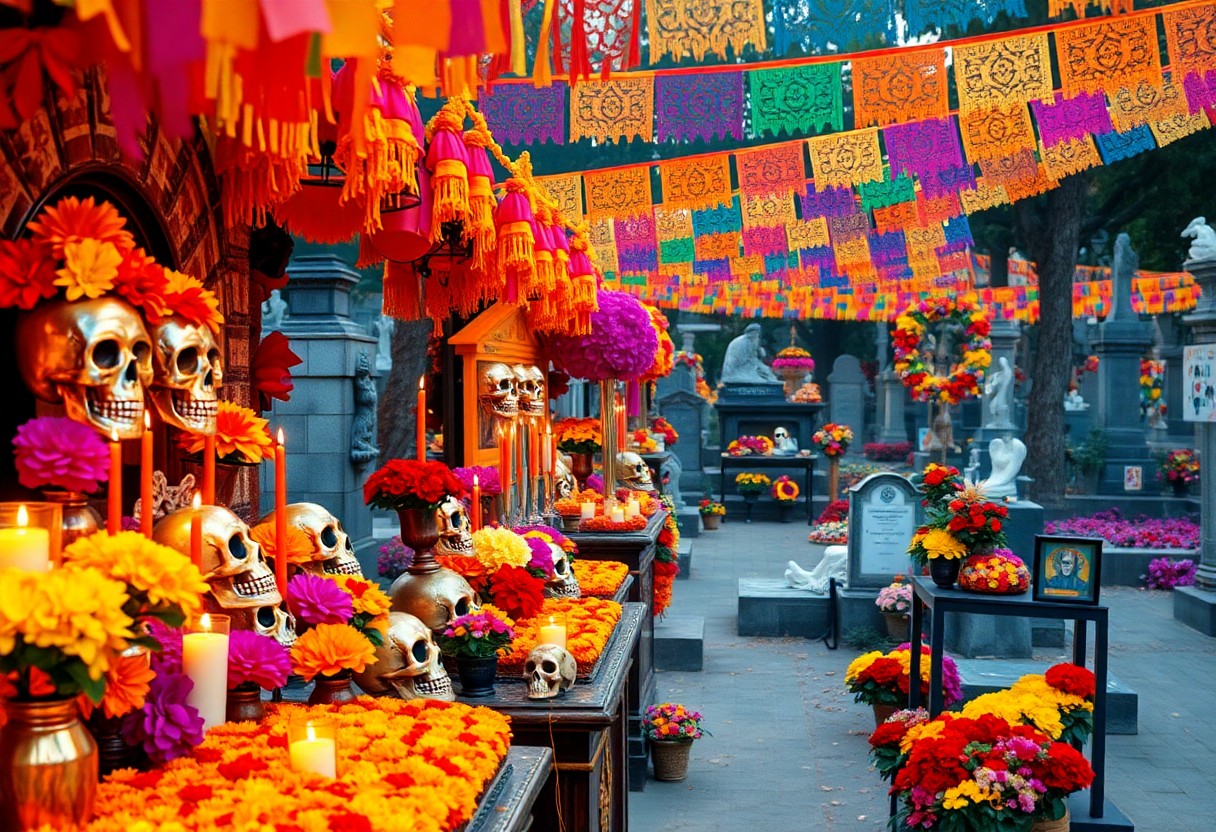
Mexico’s Perspective on Death
Clearly, Mexico’s relationship with death is unlike most cultures. Death is not seen as an end but as a natural continuation of life, a perspective deeply rooted in indigenous traditions and Catholicism. During the Day of the Dead, this view is celebrated with vibrant colors, music, and joyful remembrance, transforming what might be somber elsewhere into a lively tribute. In San Miguel de Allende, this celebration is particularly vivid, with ofrendas (altars) adorned with marigolds, photos, and offerings to welcome the spirits of loved ones. Here, death is embraced, not feared, creating a unique cultural experience you won’t find anywhere else.
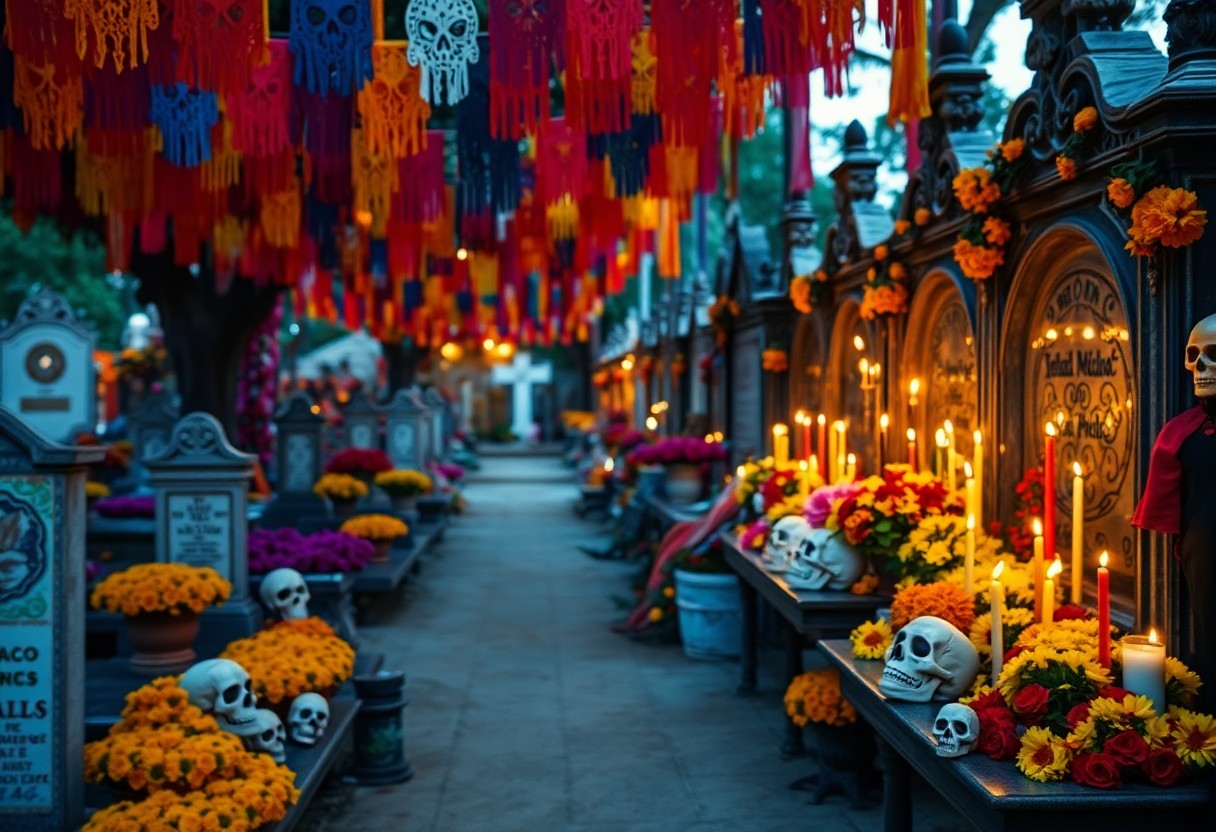
Day of the Dead vs. Halloween: Two Distinct Celebrations
Now, you might notice that both Day of the Dead and Halloween involve skeletons and themes of death, but they are fundamentally different. Day of the Dead, or Día de los Muertos, is a joyful celebration of deceased loved ones, rooted in Mexican culture. Halloween, on the other hand, is a festival of spooky fun with origins in Celtic traditions. While Halloween focuses on fear and mystery, Day of the Dead emphasizes remembrance and celebration of life.
Origins
Dead for over 3,000 years, Day of the Dead traces its roots to ancient Mesoamerican civilizations like the Aztecs, who honored the goddess Mictecacihuatl. With Spanish colonization, the tradition blended with Catholic holidays, All Saints’ Day and All Souls’ Day, creating the modern celebration. Halloween, however, began as the Celtic festival of Samhain, marking the blur between the living and the dead, later Christianized by the Church.
Purpose and Meaning
With Day of the Dead, you celebrate the lives of departed loved ones, embracing death as a natural part of life. Families create ofrendas (altars) with marigolds, photos, and favorite foods to welcome spirits. Halloween, in contrast, is about fun and fright, with costumes, trick-or-treating, and spooky themes.
Plus, Day of the Dead is deeply spiritual, focusing on reconnecting with ancestors and honoring their legacy. It’s a time for families to come together, share stories, and celebrate the continuity of life. Halloween, while entertaining, lacks this profound cultural and emotional depth.
Traditions and Activities
Even in San Miguel de Allende, you’ll see vibrant traditions like ofrendas, parades, and families decorating graves with marigolds. People dress as Catrinas or skeletons, and traditional foods like pan de muerto are shared. Halloween, however, involves trick-or-treating, pumpkin carving, and costume parties, often influenced by American culture.
Halloween in San Miguel de Allende is more common among expatriates and urban locals, while Day of the Dead remains a deeply rooted tradition for Mexican families. The city’s celebrations are a blend of solemn remembrance and lively festivities, offering a unique experience you won’t find elsewhere.
Celebration in San Miguel de Allende
Despite its colonial charm, San Miguel de Allende transforms into a vibrant hub during the Day of the Dead. You will witness streets adorned with marigold flowers, intricate papel picado, and families gathering to honor their loved ones. The city hosts lively parades, where locals dress as Catrinas and skeletons, blending tradition with artistry. You can explore beautifully crafted ofrendas in public spaces, each telling a story of remembrance. While the celebration is joyful, it’s important to respect the sacred nature of the event, especially in cemeteries where families gather privately to celebrate the lives of the departed.
Typical Day of the Dead Traditions
For centuries, Day of the Dead traditions in San Miguel de Allende have blended indigenous and Catholic influences, creating a vibrant celebration of life and death. You’ll see families building ofrendas (altars) adorned with photos, candles, and favorite foods of the departed. Streets are filled with marigolds, calaveras (decorated skulls), and papel picado (perforated paper banners). These traditions honor loved ones, inviting their spirits to return and celebrate with the living. The atmosphere is joyful, with music, parades, and communal gatherings that reflect the Mexican embrace of death as a natural part of life.
Alfeñiques and Papel Picado
An imperative part of Day of the Dead, alfeñiques are intricate sugar sculptures shaped like skulls, animals, or other figures. These edible artworks symbolize the sweetness of life and are often personalized with the names of the deceased. Alongside them, papel picado—delicately cut tissue paper banners—adds color and movement to the celebrations. The perforations in the paper are believed to guide spirits to the ofrendas, while the vibrant designs remind you of the fleeting nature of life.
Marigolds and Calaveras
If you visit San Miguel de Allende during Day of the Dead, you’ll be surrounded by the bright orange hues of marigolds, known as cempasúchil. These flowers are thought to guide spirits with their vibrant color and strong scent. Alongside them, calaveras (decorated skulls) appear everywhere—on altars, in parades, and even as face paint. These skulls, often whimsical and colorful, symbolize the playful acceptance of death in Mexican culture.
A deeper look into marigolds and calaveras reveals their profound significance. Marigolds are not just decorative; their petals are used to create paths leading to ofrendas, ensuring spirits find their way home. Calaveras, whether made of sugar, clay, or painted on faces, serve as a reminder that death is not to be feared but celebrated. In San Miguel de Allende, these elements come together to create a visually stunning and spiritually meaningful experience, honoring the cycle of life and death in a way that is both joyful and respectful.
Final Words
From above, San Miguel de Allende offers you a profound way to embrace death through its vibrant Day of the Dead celebrations. You witness a blend of ancient traditions and modern expressions, where families honor their loved ones with colorful altars, marigold flowers, and joyful gatherings. The city’s streets come alive with parades, papel picado, and the aroma of pan de muerto, inviting you to experience a cultural perspective that views death as a natural part of life. In San Miguel de Allende, you don’t just observe the Day of the Dead—you feel its spirit, celebrating life and memory in a uniquely Mexican way.
FAQ
What makes San Miguel de Allende a special place to celebrate Day of the Dead?
San Miguel de Allende is known for its vibrant and authentic Day of the Dead celebrations. The city combines traditional Mexican customs with unique local touches, such as elaborate parades, colorful altars, and community gatherings. The historic streets and colonial architecture provide a picturesque backdrop for the festivities, making it a memorable experience for visitors.
What are the key traditions of Day of the Dead in San Miguel de Allende?
Key traditions include creating ofrendas (altars) adorned with marigold flowers, photos of the deceased, and their favorite foods. Families clean and decorate graves, and people often dress as skeletons or Catrinas. The city also hosts parades, live music, and cultural performances, offering a mix of solemn remembrance and joyful celebration.
How can visitors respectfully participate in Day of the Dead celebrations in San Miguel de Allende?
Visitors should approach the celebrations with respect and cultural sensitivity. Avoid intrusive photography in cemeteries, as these are sacred spaces for families. Participate in public events like parades and workshops, and consider learning about the traditions beforehand. Supporting local artisans by purchasing handmade crafts or traditional foods is also a meaningful way to engage.
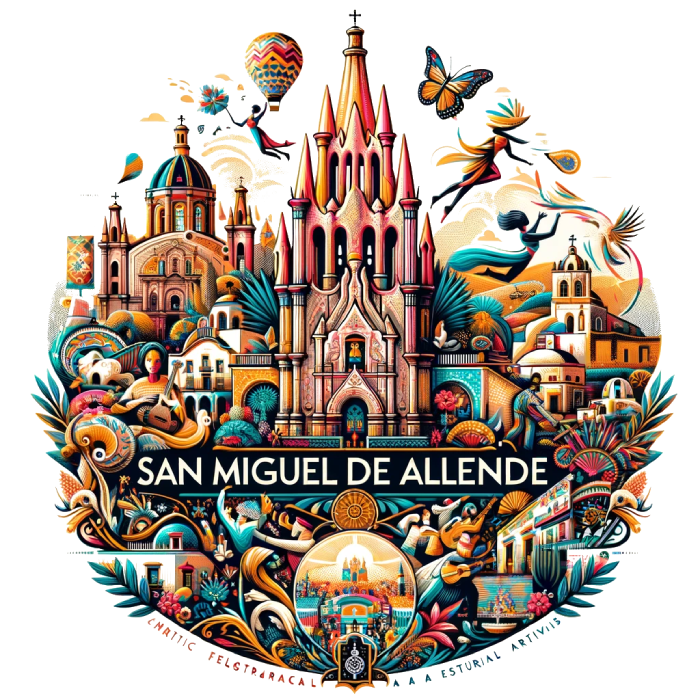


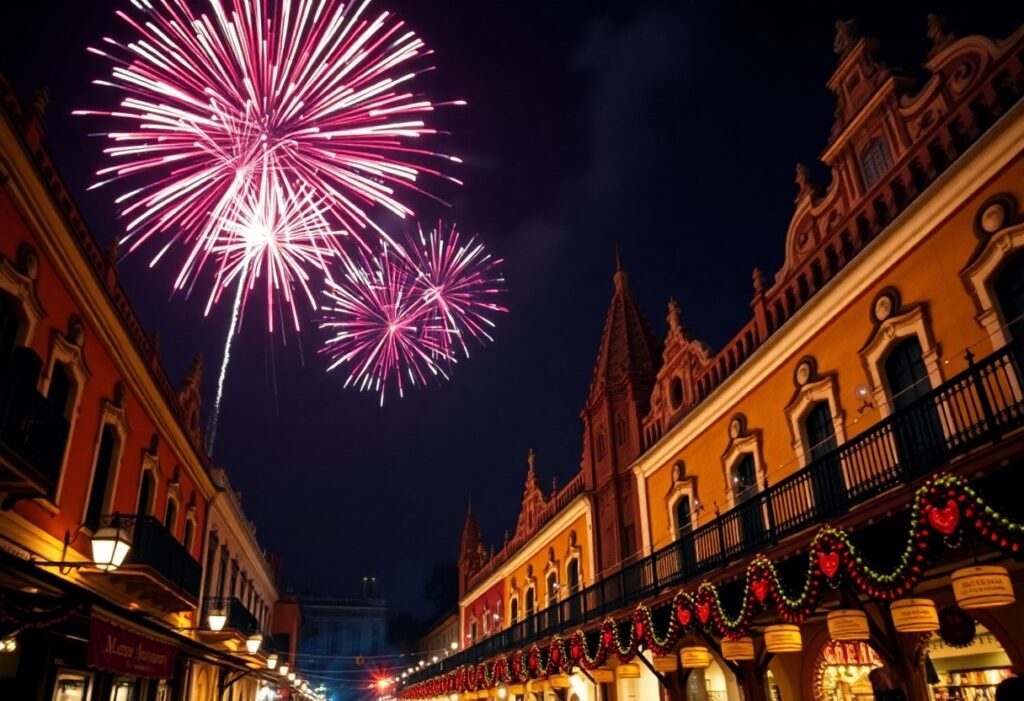
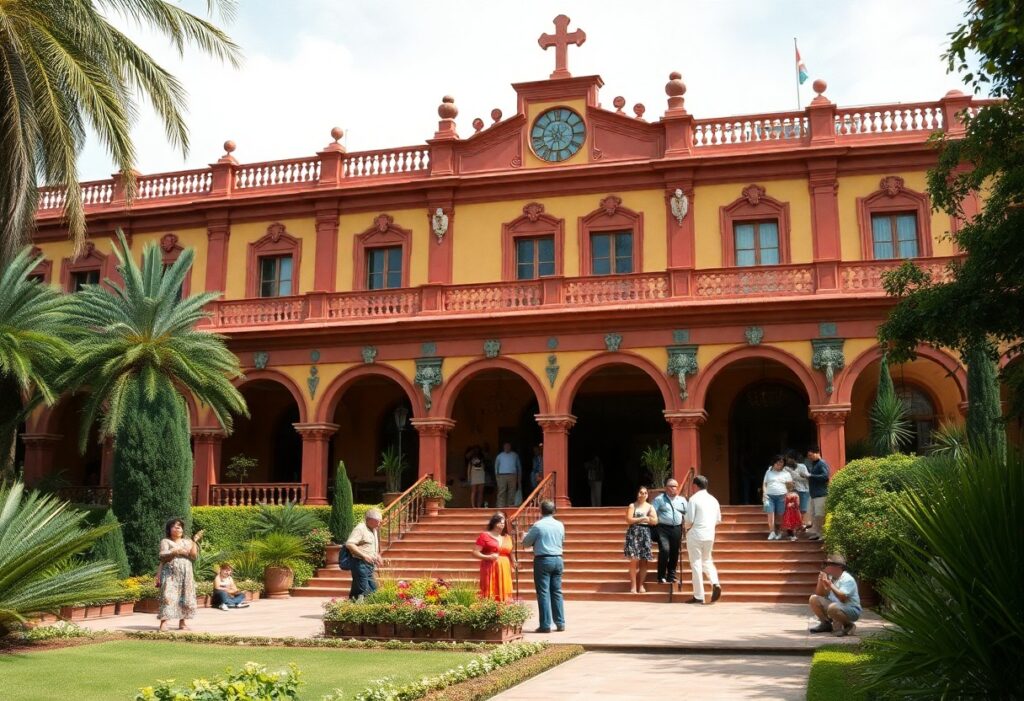
This exploration of death in San Miguel de Allende really resonates with me, particularly the perspective that sees it as a vibrant celebration rather than a somber event. In many cultures, including my own, there tends to be an almost taboo-like nature surrounding the topic of death, which often leads to fear and avoidance rather than acceptance and understanding. The contrast you describe in San Miguel de Allende is not only striking but also reveals a valuable approach to a universal experience—death.
It’s interesting how deeply culture shapes our perceptions of life milestones, including death. In San Miguel de Allende, the way the community embraces death as a part of life truly stands out. While it might seem counterintuitive at first, viewing death through a lens of celebration fosters connection, honor, and even joy.
It’s interesting how cultural differences shape our views on such a universal experience. In San Miguel de Allende, death really does take on this vibrant, colorful life of its own. I think part of it has to do with how deeply interconnected the community feels to the idea of death. Celebrating life and acknowledging death can create a more holistic understanding of both, which I see as crucial.
You’ve touched on something really profound about how communities like San Miguel de Allende celebrate death. It’s clear that their cultural practices surrounding mortality foster a unique atmosphere of acceptance and connection. This vibrant relationship with death—where it’s not seen just as an end but as a continuation of life’s cycle—shifts the whole tone of how we live and learn from that inevitability.
I get what you’re saying about the taboo surrounding death. It’s something that can weigh heavily on people. In San Miguel de Allende, the approach is like a big, warm hug—people really embrace it. They turn it into a community event, using traditions to honor loved ones. The vibrant colors, music, and food create this atmosphere where remembering someone feels like a celebration of their life rather than just mourning their absence.
Your reflection on the Day of the Dead in San Miguel de Allende highlights a fascinating cultural richness that many often overlook. The contrast between the vibrant celebrations there and the somber attitudes toward death in other cultures is striking. It’s a powerful reminder of how different societies interpret and integrate the concept of death into their lived experiences.
Your exploration of the Day of the Dead in San Miguel de Allende truly captures the spirit of a celebration that many people outside of Mexico might not fully understand. It’s a fascinating perspective to view death not as a somber occasion, but as a joyful celebration of life and ancestry. The vibrant atmosphere you described—filled with marigold petals, evocative altars, and the loving memories of lost loved ones—truly reflects the richness of Mexican culture.
You hit the nail on the head with your observations about the Day of the Dead, especially in a place like San Miguel de Allende. It’s one of those celebrations that feels like it defies convention and gives a wink and a nudge to the usual way we think about death and grief. Instead of the stiff collars and somber suits, you’ve got colorful skulls called “calacas” smiling at you like they just heard the funniest joke at the bar.
Your exploration of the Day of the Dead celebration in San Miguel de Allende brilliantly captures the heart of a tradition that holds profound significance for many, transcending mere cultural practice to touch upon the universal themes of life and memory. The vivid imagery of marigolds and altars filled with offerings paints an inviting picture that not only highlights the beauty of the celebration but also reflects its deep-rooted history and cultural context.
I find it fascinating how the Day of the Dead manages to flip our typical view of death on its head. Here in the U.S., we often treat death like an awkward Thanksgiving dinner—it’s something we don’t talk about, and when it does come up, everyone feels compelled to change the subject or seek the nearest exit. But in San Miguel de Allende, it sounds like they’ve thrown that notion out the window and decorated it with marigolds instead!